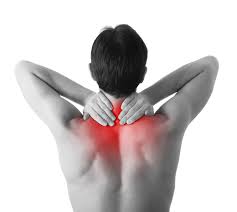Cancer can also cause physical pain. Palliative treatment is an essential part of managing cancer pain. It can help improve the quality of life for those diagnosed with cancer and reduce their suffering. This article discusses palliative pain management strategies. This article emphasizes the importance of treatment interventions and relaxation techniques that contribute to compassionate, comprehensive care.
Understanding Cancer Pain
Cancer pain types and causes:
Cancer pain is caused by many things, including the tumor itself, chemotherapy, surgery and other conditions.
Different types of pain, such as nociceptive (due to tissue damage) or neuropathic (due to nerve damage), require tailored approaches.
Quality of Life and its Impact on
Uncontrolled cancer pain can reduce a person’s quality of life.
This condition can impact physical health, mental well-being, and the ability to carry out daily activities.
Palliative Care as a Holistic Approach
Holistic Pain Management
Palliative care aims to treat physical, emotional, and spiritual pain.
Human pain is a multidimensional experience. The goal of the program is to improve an individual’s well-being.
Collaborative Care:
Multidisciplinary healthcare professionals are involved in palliative care, including doctors, nurses and social workers.
The collaborative approach is intended to meet cancer patients’ needs in a comprehensive way.
Cancer Pain and Pharmacological Treatment
Opioid Analgesics:
Opioids such as morphine and oxycodone are used to treat cancer pain.
These drugs can be effective for relieving moderate-to-severe pain. However, they must be monitored and adjusted due to side effects.
Adjuvant Medications:
Antidepressants and anticonvulsants can be used as adjuvants to treat cancer pain.
These drugs complement opioids and target specific pain mechanisms.
Nonsteroidal Anti Inflammatory Drugs:
NSAIDs such as ibuprofen and naproxen are both anti-inflammatory and analgesic.
Sometimes these drugs are used with opioids to relieve pain.
Local Anesthesia
Local anesthetics, administered as patches or injections, provide pain relief.
They are particularly useful for treating localized pain, such as that which results from surgery.
Non-pharmacological Treatments of Cancer Pain
Physical Treatment
Physical therapy can help maintain or restore mobility.
Exercises and interventions by physical therapists can reduce musculoskeletal pain and improve health.
Acupuncture & Acupressure:
Traditional Chinese medicine techniques like acupressure or acupuncture can relieve cancer pain.
The techniques are designed to stimulate specific points and regulate the energy flow, thereby relieving pain.
Psychosocial Support:
Psychotherapy and counseling can help to manage the mental and emotional aspects of cancer pain.
Supportive care helps people deal with anxiety, depression and existential issues that are linked to their diagnosis.
Integrative Therapies
Mind-body practices like yoga and meditation can reduce stress in palliative care and promote relaxation.
Massage, art therapy and music therapy can all help a person to feel more comfortable and relaxed.
Relaxation Techniques in Cancer Pain Management
Meditation for mindfulness:
Meditation that encourages mindfulness and acceptance in the moment.
This calms the mind and helps with emotional pain.
Deep Breathing Exercises
Controlling breathing can help you relax and reduce stress.
Deep breathing can be tailored according to an individual’s abilities and preferences.
Guided Imagery
Guided imagery is a process that creates mental images to distract from pain and induce a relaxed state.
It is particularly beneficial for reducing anxiety and improving your mood.
Progressive Muscle Relaxation
The PMR technique involves tensing and relaxing different muscle groups in a systematic manner.
This technique helps to relieve tension and pain caused by cancer.
Relaxation techniques for cancer pain relief
Stress Reduction:
Cancer pain and stress are often linked.
Relaxation techniques can reduce stress, and help you to be calmer.
Sleep Improvement:
Cancer pain can disrupt sleep patterns.
Relaxation practices can be incorporated into care plans to improve the quality and length of sleep.
Improve Emotional Well-Being:
It is important to consider the emotional impact of cancer.
Relaxation techniques are helpful in managing anxiety and depression.
Self-Care & Empowerment
Relaxation techniques can be used to actively manage pain by learning and using them.
You can feel more in charge of your life by practicing self-care.
Palliative care for cancer pain: The challenges
Individual Variability
Each person experiences pain differently, so treatment plans must be tailored to each individual.
It is essential to adapt interventions to the individual’s preferences and cultural background.
Education and Communication
It is important to communicate between cancer patients and their healthcare providers.
Education on the various pain management methods, both pharmacologically and non-pharmacologically, promotes informed decisions.
Cultural Sensitivity
Culture and beliefs affect the way people deal with and perceive pain.
Culture-sensitive treatment takes into account cultural differences and respects them.
Ethics:
In order to provide pain relief, it is important to respect the autonomy of patients and minimize side effects.
It is important to communicate the goals of treatment, any potential challenges and be open about it.
The conclusion to the article is as follows:
Palliative pain management goes beyond reducing physical symptoms. Palliative approaches to cancer pain control embrace a holistic, multi-dimensional approach. To help cancer patients manage pain, relaxation techniques can be integrated into the treatment plan. The techniques also enhance the quality of life. By combining pharmacological, non-pharmacological, and personalized relaxation techniques with comprehensive care, healthcare providers can provide compassionate, comprehensive care, while still respecting dignity and autonomy of individuals facing cancer-related pain.


